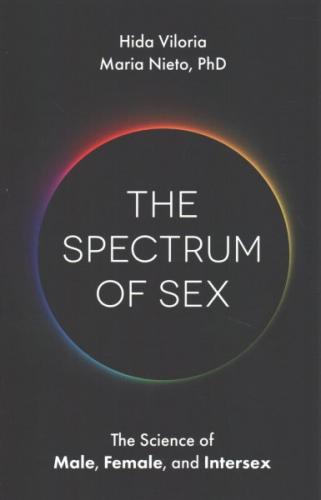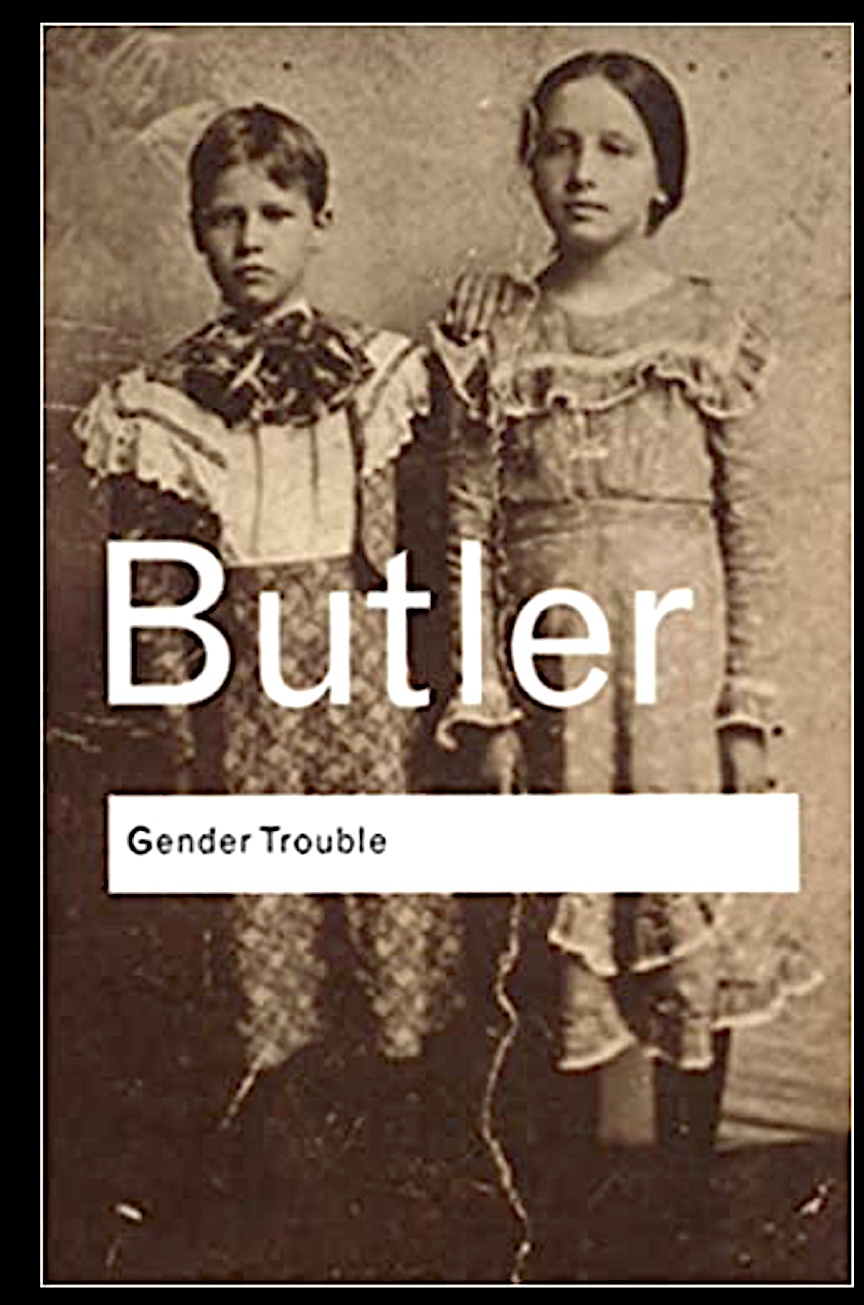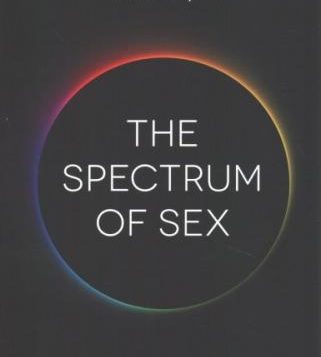 THE SPECTRUM OF SEX
THE SPECTRUM OF SEX
The Science of Male, Female, and Intersex
by Hida Viloria and Maria Nieto
Jessica Kingsley Publishers.
156 pages, $18.95
WHAT WAS KNOWN in the West since antiquity as “hermaphroditism” has been a biological challenge wrapped in mythology, curiosity, and speculation. It came to popular attention when it became politically charged in the 1990s under the label “intersex.” Patient advocates and gender studies academics have debated the theoretical and clinical lessons to be drawn from the condition and even how to name it. In just the last two decades, the umbrella term has shifted from: hermaphrodite and “pseudohermaphrodite,” to intersex, to DSD (variously spelled out as “disorders of sex development,” “disorders of sex differentiation,” and “differences of sex development”), and VSC (“variations of sex characteristics”). There is tremendous political significance in a name, just as there has been regarding terms for sexual orientation: sexual inverts, psychosexual hermaphrodites, homophiles, homosexuals, gay men and lesbians, queer people, and so on.
For millennia, the issue of hermaphroditism arose at the very rare birth of a human or farm animal with atypical or “ambiguous” genitalia. Even more rare was the seemingly miraculous emergence of penis and testicles in women (noted in the 16th century by French royal surgeon Ambroise Paré). Over the 20th century, the chromosomal, genetic, and endocrinological causes of some of the most common intersex conditions were identified, such as Congenital Adrenal Hyperplasia (CAH), Androgen Insensitivity Syndrome, Klinefelter Syndrome, and Turner Syndrome.
By the mid-20th century, simultaneous advances in surgery and the isolation of steroid hormones (including estrogen and testosterone) allowed for the possibility of transgender “sex change”: the surgical and hormonal treatment of adults who wished to transition from their natal sex to their psychological gender. These medical advances also facilitated the treatment of infants born with ambiguous genitalia: particularly severe cases of CAH, hypospadias, or other major birth defects. In past centuries, many of these infants probably would have died.
By the 1960s, the standard practice became more self-confident and aggressive: a medical team decided the probable gender of a newborn with ambiguous genitalia and recommended surgery to the parents. In those more paternalistic times, medical articles even recommended not explaining the diagnosis to parents and simply reassuring them that surgery would fix their infant.
A transformation of this clinical approach began largely thanks to the Intersex Society of North America (ISNA). Bo Laurent (working under the pseudonym “Cheryl Chase”) founded the group in 1993 as a way to productively deal with her own painful intersex past: her family had concealed her “hermaphrodite” diagnosis and her history of clitoral surgery in order to raise her unambiguously as a girl. However, like untold numbers of people with clitoridectomies, clitoral “reduction,” or “female circumcision” (a traditional African and Middle Eastern practice), Chase had been left with numb, disfigured genitalia that inhibited her sexual development. Thanks to her techie background as an MIT graduate, Chase was able to take advantage of the emerging internet to develop a support group for intersex people who felt isolated and ignored.
In 1994, ISNA began publishing an occasional newsletter, Hermaphrodites with Attitude, and started agitating for public awareness of intersex and for changes in the medical (particularly surgical) care of intersex conditions. The group’s first 1996 meeting (including the young Hida Viloria) was documented in a short video, Hermaphrodites Speak! Through consciousness raising, they sought to reduce the silence, stigma, and shame burdening intersex conditions. ISNA also became an activist group by protesting at the 1996 American Academy of Pediatrics convention in Boston. However, ISNA shifted its tactics from confrontation to collaboration with medical professionals in order to transform the medical care of intersex people. I became acquainted with the intersex movement in the late 1990s as a historian of sexuality, before going on to complete my medical and psychiatric training. I started caring for children with intersex conditions in 2000 and later became the psychiatric attending physician in UCLA’s multidisciplinary intersex (later DSD) clinic. After I finished my child psychiatry fellowship in 2002, Chase recruited me to chair ISNA’s Medical Advisory Board to be a part of a medical insider group sympathetic to its mission and eager to lobby medical colleagues. I was also invited to speak at one of the early meetings of another new support group, one for men with hypospadias.
Hypospadias is a birth defect where the urinary outlet (meatus) is not at the tip of the penis but somewhere along the underside of the penis. Present in around 1 in 250 male live-births, it is one of the most common anomalies, yet its causes remain unclear (as is true for most intersex cases). Hypospadias sometimes runs in families and is also associated with hundreds of genetic syndromes. In most cases it is mild: the meatus is just slightly off center and of no functional consequence. In severe cases, the shaft of the penis did not tubularize and the genitalia can appear female or ambiguous. Therefore, doctors classify only a small fraction of hypospadias cases as intersex or DSD. The vast majority of individuals with hypospadias consider themselves males, although many (particularly those who went through multiple penile corrective surgeries) experience emotional distress or psychosexual developmental delays. When a support group for men with hypospadias formed in 2001, many members did not want hypospadias to be included under the rubric of “intersex.” They did not feel there was any ambiguity or ambivalence about their biological sex or their gender identity as males. Some worried that the term “intersex” would conflate their condition with that of transgender people in the public’s mind. In fact, the current website of the U.S. Hypospadias and Epispadias Association avoids using the word “intersex.”
A further debate has been between those seeking to completely demedicalize intersexuality and those seeking to provide group support and patient advocacy through collaboration with medical professionals. The mission of many groups is to foster such collaboration as well as to further scientific research on the causes and treatment of particular intersex diagnoses. By the 2000s, ISNA lobbied physicians—pediatric urologists, in particular—to reconsider what were essential genital surgeries versus those that attempt to create more “normal” appearing genitalia. ISNA and its medical allies devised new, patient-centered standards of care for intersex children and their families. It also promoted a terminology change from “hermaphrodite” to “Disorders of Sex Development.” However, this medical collaboration—as well as the perceived failure to depathologize—has remained controversial for some intersex activists, such as Hida Viloria and Mario Nieto, authors of The Spectrum of Sex (discussed below).
Finally, there is the academic issue of how to exploit intersex in the deconstruction of sex/gender. Since the 1960s, it has become a terminological standard to distinguish gender from sex. Construed as a social and psychological phenomenon, gender is binary only because of historical and cultural enforcement. On the other hand, sex pertains to the biological dimorphism of male and female. As such, sex seemed harder to theorize away as a socio-historical construct. That is until Judith Butler’s performativity theory in Gender Trouble (1990) provided Queer Theory’s most persuasive argument: sex is just as socially constructed as gender since both are given meaning through language and are enacted through actions that repeatedly (psychoanalysts would say neurotically) define and reinforce the polarity of the sexes. Suzanne Kessler’s Lessons from the Intersexed (1998) inspired feminist scholars to use intersex to demonstrate sex trouble: the supposed sharp division between female and male biology does not exist any more than the divide between genders. Surgeons’ eagerness to “normalize” ambiguous genitalia—into either penis or vagina—seemed proof that sexual dimorphism was literally constructed.
 Biologists, however, have long been aware of the spectrum between male and female. As noted, hermaphroditism was described in Greek antiquity, and the mesonephric ducts were described in the 18th century. Freud was so convinced of the innate “bisexuality” of the species that he made it a cornerstone of his psychoanalytic theory of psychosexual development. In more practical terms for people with intersex conditions, the majority of them do not have gender trouble. Their sex assigned at birth corresponds to their gender identity as adults; what in the last decade has been termed “cisgender.” Some grew up to identify as gender non-binary (such as Viloria), or as genderqueer, or as transgender—just as some biologically typical people do. Viloria and Nieto include moving testimonials from a spectrum of people, some with intersex diagnoses, others who do not declare any intersex diagnosis but identify variously as trans and “gender non-conforming butch.” The book ends with a thoughtful discussion about the trans politics of the term cisgender. This is all to support the authors’ case for the big umbrella use of intersex. However, as noted, this is highly contentious for many people with specific intersex diagnosis.
Biologists, however, have long been aware of the spectrum between male and female. As noted, hermaphroditism was described in Greek antiquity, and the mesonephric ducts were described in the 18th century. Freud was so convinced of the innate “bisexuality” of the species that he made it a cornerstone of his psychoanalytic theory of psychosexual development. In more practical terms for people with intersex conditions, the majority of them do not have gender trouble. Their sex assigned at birth corresponds to their gender identity as adults; what in the last decade has been termed “cisgender.” Some grew up to identify as gender non-binary (such as Viloria), or as genderqueer, or as transgender—just as some biologically typical people do. Viloria and Nieto include moving testimonials from a spectrum of people, some with intersex diagnoses, others who do not declare any intersex diagnosis but identify variously as trans and “gender non-conforming butch.” The book ends with a thoughtful discussion about the trans politics of the term cisgender. This is all to support the authors’ case for the big umbrella use of intersex. However, as noted, this is highly contentious for many people with specific intersex diagnosis.
This gets back to the issue of whether intersex should be considered narrowly as a group of highly diverse and fairly rare medical diagnoses or broadly as a capacious identity that includes not only people with DSD but also trans and gender nonbinary people. Perhaps it could also include gay people, who were once conceptualized as “sexual inverts” or psychosexual hermaphrodites. Even current neurodevelopmental research on sexual orientation hypothesizes that homosexual orientation is the result of cross-sexed neuroanatomy. The same hypothesis underlies research on the biology of transgender. If all these different areas of research were to prove reliable and widely reproducible (which they have not yet), vast numbers of people with diverse traits would fall under the rubric of biological intersex.
HIDA VILORIA and Maria Nieto’s The Spectrum of Sex is a short, readable introduction accessible to undergraduates. Viloria, a Latinx, gender-nonbinary educator, and one of the original ISNA members, has appeared widely on television and published a memoir (Born Both: An Intersex Life, 2017). Maria Nieto is a biologist, novelist, and professor emerita at California State–East Bay, who has been an activist in favor of marriage equality.
The biology lessons interspersed through the volume are a wonder of clarity and objectivity. They are ably supported by Alex Law’s illustrations. The biological sections cover much of the current biomedical understanding of intersex: the genetics of sex determination, the endocrinology of sex differentiation, the amazing complexity of embryological development, and many of the most common medical intersex syndromes (with their diverse anatomical and endocrinological characteristics). The one notable oversight in the embryology lessons is an explanation of the mesonephric ducts versus parameso-nephric ducts that are present in all embryos but that usually develop into sex-differentiated anatomy: mesonephric into the ducts that convey sperm from the testes; the paramesonephric into the uterus, upper third of the vagina, and the hymen. This one example from developmental embryology highlights how—for two centuries—biologists have realized that mammalian development is complexly “bi-sexual”: “male” and “female” systems of genes, cells, and hormones interact simultaneously (and sometimes oppositionally) in shaping healthy, functional anatomy and physiology. The political aspects of intersex are no less complex, although only of a few decades duration, and could be grossly simplified to medical advocacy challenges versus gender identity politics.
I would argue that a theoretical and clinical shortcoming of The Spectrum of Sex is, ironically, its focus on sex. From my clinical experience, to focus on sex and genitals of children born with intersex anatomies is to neglect them as whole people. Indeed, one of the major missions of ISNA was to encourage attention to the overall functioning of intersex children and their families. Furthermore, as suggested earlier, intersex conditions are complex and often are part of a larger syndrome affecting other organ systems as well as cognitive development. Ongoing research in molecular biology continues to point out the intricate connectedness of cells and organs not just in the embryogenesis of the genitals, but in physiology into adulthood. In terms of gender theory, perhaps the lesson from intersex is not so much the non-binariness of sex as it is the entanglement of sex/gender with all the other aspects of being human. For those just stepping into the thicket of intersex issues, Viloria and Nieto’s book will nevertheless be a helpful and accessible guide to the fascinating biological and political issues of the field.
* In The Spectrum of Sex, Hida Viloria and Maria Nieto only passingly mention that some surgeries and lifelong hormones are essential to survival for some intersex conditions. An uninitiated reader might think all medical treatment of intersex conditions is cosmetic and unnecessary.
Vernon Rosario, MD, PhD, is a historian of science and associate clinical professor of psychiatry at UCLA. He works as a child psychiatrist with the L.A. County Dept. of Mental Health.






